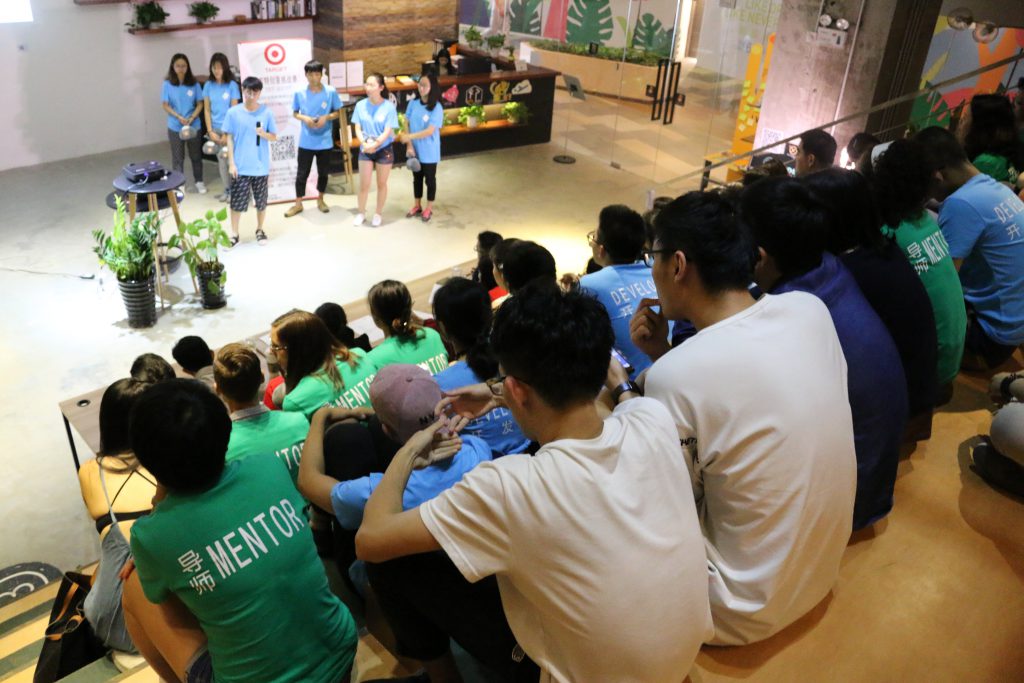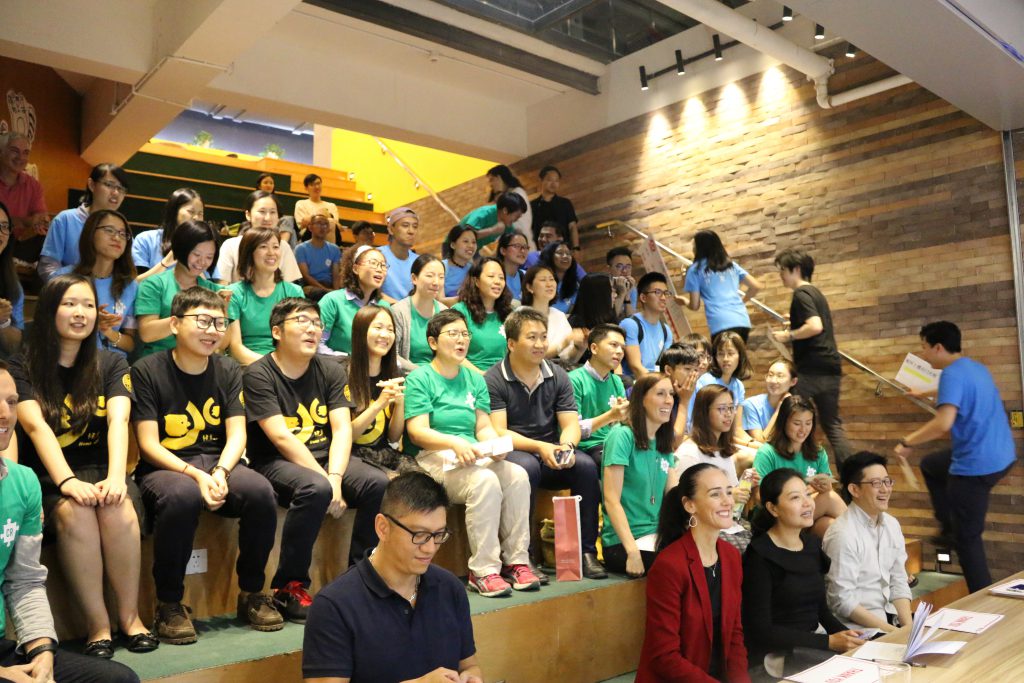Following a two-week period of desk and field research, the Target Design an APP for left-behind children hackathon was held in Shanghai last weekend. Six student teams brainstormed for 24-hours straight to design an innovative APP that transforms the way migrant worker parents communicate with their children left behind in rural China.
The outputs at the end of the 24-hour deadline were some highly innovative solutions that the students presented to a panel of Target representatives and industry experts. By leveraging technology with their wide-ranging knowledge in the area and multidisciplinary skill sets, the students banded together to approach the problem and propose potential steps forward.
Challenge Constraints
Aside from the 24-hour time constraint, students were reminded to consider two externalities when designing their APP:
- Smartphone penetration rates – Target trainers estimate only 25% of workers have access to smartphone technology
- Internet access in rural areas of China – varying rates between the home provinces of migrant workers
Through their research in the lead up to the hackathon, students were asked to come up with proposals for business partnerships as a way of overcoming the reality of these constraints. Otherwise, teams were encouraged to think outside the box and “break the rules” in an opening keynote speech by Ivanka Mamic, Target Senior Director of Responsible Sourcing.
Later, founder of Italki, Kevin Chen, inspired students to embrace uncertainty: “You are working to help solve a huge social issue in China, so it is natural that there will be many uncertainties along the way. Get used to it and embrace the uncertainty! Focus on what is important and build your ideas around that,” he said.
Ideas Pitching
At the end of the 24-hour challenge, students had just 10 minutes to pitch their APP designs to the judging panel, followed by a short Q&A session. Student teams were able to give a strong defense for their design approach, which were based on thorough user research taking the form of interviews, surveys, and conversations with their focus user groups. The outputs were built around specific activities and in-app platforms designed to increase parent and child interaction, allowing them to become remotely present during their child’s critical stages of development. Each team had the same starting point, yet took the challenge in very different ways, with most focusing on parent-to-child interaction as the primary users, and others touching on possibilities to connect the left-behind family community including rural schools and migrant worker parents in the same factories.

A Scalable Solution
While the hackathon simulated a valuable real life working experience for the students, with clients and project deadlines, Target’s business interests in the outputs go much deeper than this. The goal is for the APP to impact 3 million people with potential for investment in the APP making it accessible to the migrant parent workforce in more than six hundred factories across China. The outputs of the hackathon are intrinsically linked to the Responsible Sourcing aspirations of Target, as Ivanka explained, “we are working to elevate worker well-being throughout our supply chain and build new relationships and programmes that transform the way Target and the rest of the industry manufactures.” Building a community that empowers migrant worker parents to stay connected to their left-behind children is more important that ever in the creation of a supportive working environment that both attracts and retains the migrant workforce.
Collective Action
As with all of our hackathons, the 24-hour experience serves as a driving force to the amount of work that can be achieved through cross industry collaboration. This time, participants included twelve internal mentors from Target Sourcing and Responsible Sourcing departments from different parts of China, Hong Kong, and Thailand, six industry experts from the Shanghai design, technology and NGO communities, including italki, a representative from the British Consulate General Shanghai, and sustainable supply chain experts from ICTI-Care.
Aside from the APP design outputs, seeing individuals with different skills sets engaged to find solutions, working together to create positive, scalable impact, is perhaps the most valuable takeaway from the 24-hours. The student outputs are a testimony for what can be achieved when different stakeholders are brought together to catalyze real social change.
Congratulations to our Challenge Winners!

Winning Teams:
First Prize: Shanghai Fudan University
Second Prize: Shanghai NYU
Third Prize: Shanghai University for Science and Technology
Other Participating Universities:
Shanghai Jiaotong Universi
Shanghai Tongji University
